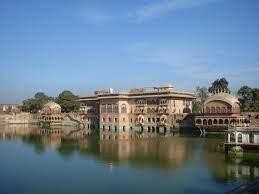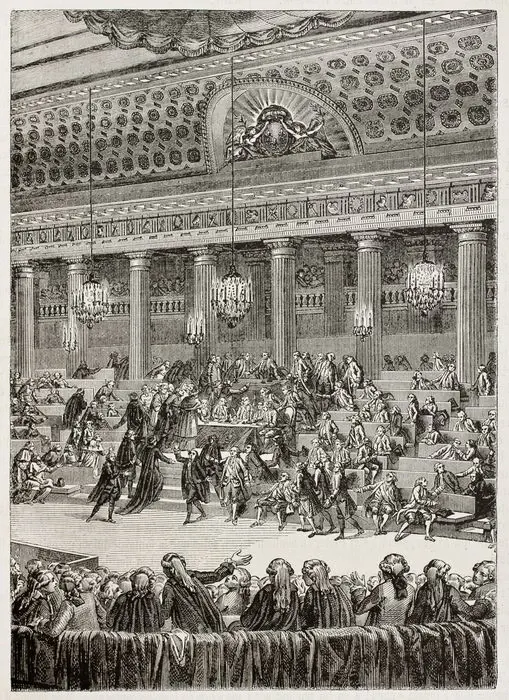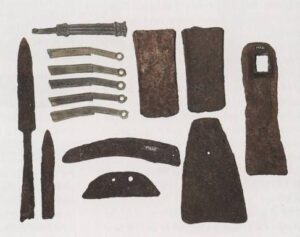Introduction
Numerous independent and semi-independent regional powers emerged as a result of the Mughal Empire’s decline. The Jats were agricultural settlers who lived in the areas surrounding Delhi, Agra, and Mathura. They were outraged by Aurangzeb’s repressive policies and began to rebel against the empire. Under the leadership of Gokul, one of the Tilpat zamindars, these revolts began in 1669. After some initial challenges, they were successful in creating the new Jat state of Bharatpur, which was led by Churaman and Badan Singh. Under Surajmal, this Jat state of Bharatpur attained its pinnacle. He not only established a productive government but also greatly increased the size of this empire. This state covered the areas from the Ganges in the east to Chambal in the south. Subas Agra, Mathura, Meerut, and Aligarh were also added to the state.
Expansion of Jat power (1680-1707)
There were many leaders of the farmer community, who raised their voices against the oppressive systems of the Mughals. This peasant group has several leaders who spoke out against the Mughals’ repressive regime. Brij Raj of Sinsini was one such ruler during the seventeenth century who joined up his forces with the other Jat rebels to form an alliance against Mustafa Khan, the faujdar of Agra. He was instrumental in bringing together the people who wished to refuse to pay the taxes demanded by the Mughal government. Even though the local faujdar had earlier promised to assist in this case, he ultimately decided to commit suicide alongside other villagers rather than pay the money. The faujdar Multafta Khan was ultimately conquered by Brij Raj after calling for a major fight with the faujdar’s army.
Raja Ram, the son of Bhajja Singh, was another great representative of the Jat caste (Brother of Brij Raj). By engaging in looting and plundering within the Mughal territory, he issued a severe challenge to the Mughals. He created a true standing army out of the Jat communities after learning from the failure of Gokula’s uprising. He understood how crucial it is to have a well-equipped army to combat the well-equipped armies of the Mughals. And to accomplish this, he began forming alliances with the chieftains of other Jat clans. For security, he even began constructing forts in the deepest parts of the jungle and started practicing guerrilla warfare techniques.
The northern region of the Mughal empire began to deteriorate when Aurangzeb was occupied fighting Marathas in Deccan. Jats recognized a benefit in this. To weaken the emperor’s hold over the undefended Mughal lands close to Agra, they began launching incursions there. They even attempted to raid Akbar’s tomb in Sikandra. They ultimately ran upon Abul Fazal, the local faujdar, who had defended Akbar’s tomb and the Mughals from this Jat invasion.
In 1688, Raja Ram returned to Sikandra, and this time he was successful in looting from Akbar’s grave. Aurangzeb was so outraged by the Jats‘ behavior that he despatched his grandson Bidar Khan to put an end to the Jat rebels. The Rajputs of Chauhan and Shekewat were engaged in conflict during the time. Raja Ram sided with Shekhawat, whereas Bidhar Khan sided with Chauhan. Raja Ram was killed in this combat in 1688 by a Mughal musketeer.
Prosperous agriculturalists
In the northwest of the Indian subcontinent, the Jats were the largest community (India and Pakistan). This community was made up of Indian Hindus and Sikhs.
They started as sheep and cattle herders, but eventually switched to farming as their primary activity. Due to the development of the Indus valley civilization, when people began settling down along the Indus River, the Jats likely became farmers due to this reason. Additionally, the Indus River supplied a rich area and sufficient water for farming. They began to rule the region between the two significant Mughal states of Delhi and Agra in the 1680s. Under their rule, the two significant states of Panipat and Bhallabhgarh developed into significant commercial hubs. Over time, this landowners’ community rose to prominence in different regions like Punjab, UP, Delhi, and Haryana.
Surajmal and the kingdom Bharatpur emerged as a strong state
The Jat community’s ongoing uprising against the oppressive Mughal rules eventually resulted in the establishment of Bharatpur as an independent Jat state under the leadership of SurajMal. Under the direction of Sadat Khan, the Mughals attempted to siege Bharatpur.
And one of the outposts was successfully captured by the Mughals. However, as soon as Raja Surajmal learned of this, he attacked them and trapped the Mughal camp. Later, Sadat Khan reached a settlement and left Bharatpur. Raja Suramal offered Chaudhari Charan Das protection in 1792 from Murtaza Khan (the governor of Faridabad) and the royal Farman was issued by the Mughals. Even one of the Rohilla nawab told Safdar Jang, (the Mughal grand wazir), that this Jat could not be vanquished. The Mughals took this counsel to heart and took no more action against the Jat. Faridabad was granted to Surajmal as Chaudary Charan das’ jagir. This strengthened the bonds between the Mughals and Jat.
When Ghazi-ud-din ousted Safdar Jang as grand wazir, he decided to seek revenge on Surajmal, this flared tension between Jats and Mughals once more.
He besieged the fort in 1754 with the assistance of Maratha. For three months, this siege went on. A Jat rani Kishori Bai requested their assistance and hence the Marathas were forced to assist the Jats in their fight against the Mughals.
As a result of Ahmed Shah Abdali besieging the fort of Dig and demanding a tribute that Surajmal was unable to pay, Surajmal then had to battle with Afghans. After a while, Abdali lifted the siege and left the region, but he returned in 1760 to besiege another Koli fort (modern-day Aligarh). After that, Suraj Mal once more decided to conquer Agra Fort to reclaim his power in the Doab region, and he managed to accomplish so. Surajmal eventually lost his life during a battle with Rohillas under Najib-ud-daulah. However, upon Surajmal’s passing in 1763, the Jat state started to crumble.

Summary
Several kingdoms attempted to declare their independence from the Mughal rule as the Mughals fell apart. One of them was the Jats, who were displeased and outraged by Aurangzeb’s anti-Hindu actions. The Jat communities began to rebel against these rules in the second half of the 17th century. All of these uprisings opened the stage for Badan Singh to build the Jat state of Bharatpur. Raja Surajmal deserves all the credit for uniting these Jat rebels and turning Bharatpur into a Jat stronghold. The Jat kingdom, however, started to fall once the powerful commander Suraj Mal passed away since none of his successors could manage the country as effectively as he had.
Frequently Asked Questions
1. What and when did the Gokula Rebellion happen?Ans: Gokula Singh, a Jat zamindar of Tilpat, served as the head of the Gokula uprising in 1669. By withholding the extra land tax, he questioned the Mughal government’s authority.
2. Which of Aurangzeb’s measures offended the Jats‘ religious beliefs?
Ans: The Jat group was most outraged by Aurangzeb’s anti-Hindu religious agenda. He implemented several actions, including jizyah imposition, temple destruction, conversion to Islam, and religious persecution. The Jats became disgruntled as a result of Aurangzeb’s these actions.
3. Who was Sadat khan?
Ans: As the governor of Awadh, Sadat Khan, also known as Nizam-ul-Mulk, served. Later, as he fought alongside the Mughal emperor in the Deccan campaign against the Marathas, Aurangzeb bestowed upon him the title of “Khan Bahadur.” He was very well-known as the creator of the Awadh principality,


